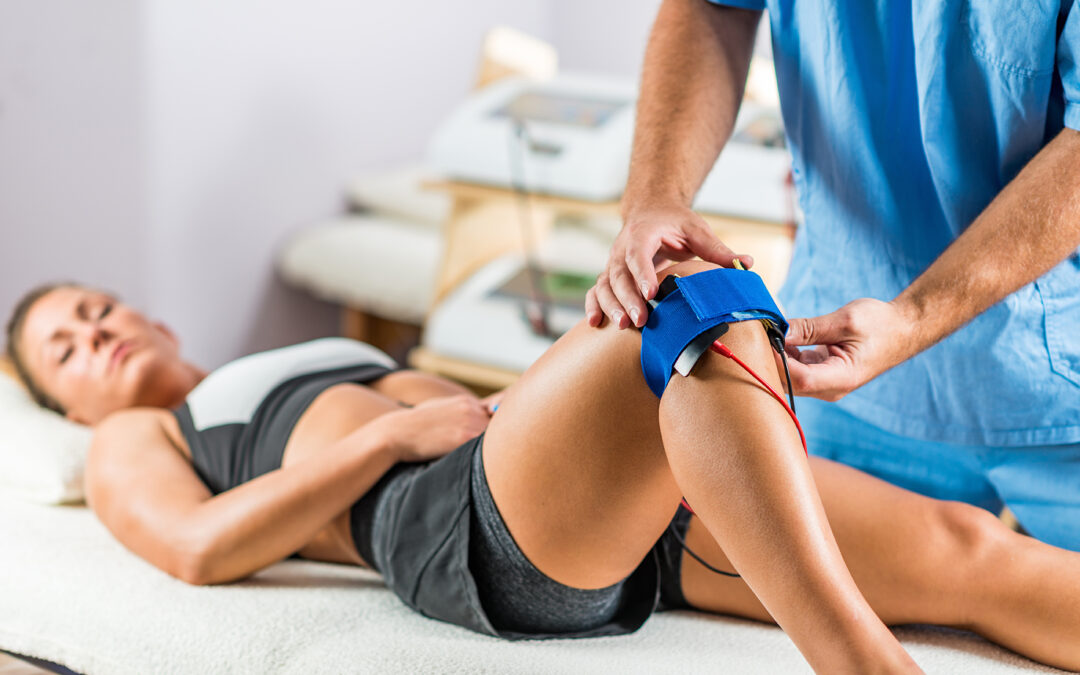Contents
We put our knees through quite a bit on a daily basis. From exercising and playing sports to simple tasks like walking and sitting down, our knee joints endure a lot of wear and tear over time. But what if you’re feeling an ache behind your knee, as opposed to in the kneecap like you might expect from time to time?
In general, knee pain is incredibly common around the world. About one-fourth of the adult population experiences frequent knee pain.
Pain in any part of the knee can interfere with your ability to do something as easy as walking from point A to point B. And if you’re specifically experiencing pain behind the knee, every step could cause discomfort.
Read on to learn about possible causes of pain behind the knee and why physical therapy should be your first course of treatment.
7 potential causes of pain behind the knee
Pain behind the knee is referred to as posterior knee pain. The posterior of the knee is located behind the kneecap, and it’s the pitted area known as the popliteal fossa, or the poplit.
There are a few possible reasons why you could be experiencing posterior knee pain. Some cause mild aches that will go away on their own, while others are injuries that may require further medical assistance.
- Leg cramp — A cramp in your leg, known as a charley horse, is incredibly common. It can occur from simple things like exercise or even unusual nerve activity while you sleep. They can cause sudden posterior knee pain that lasts a few seconds up to a few minutes.
- Hamstring injury — While doing quick, powerful motions, like jumping or sprinting, you can overstretch the hamstring muscles located at the back of your thigh. These muscles run from your hip to underneath your knee. A hamstring injury, or biceps femoris tendinitis, can cause immediate pain in the back of the knee.
- Calf strain — Gastrocnemius tendinitis, or a calf strain, can occur when you quickly move from a standing position into a run, like during a tennis match. Your calf refers to the muscles in the back of your lower leg. When you strain those muscles, the pain can radiate down from the back of your knee.
- Baker’s cyst — A popliteal cyst, or a Baker’s cyst, is a bulge behind your knee that causes tightness. It’s a fluid-filled growth that can cause pain when you try to straighten or bend your knee, though there aren’t always prevalent symptoms. It often stems from a cartilage tear or arthritis due to excess fluid.
- Jumper’s knee — You have a tendon, called the patellar tendon, that connects your shinbone to your kneecap. Jumper’s knee, or patellar tendinitis, occurs when the tendon becomes inflamed due to overuse. It gets its name due to its commonality in athletes who do frequent jumps, such as basketball players.
- ACL injury — Your anterior cruciate ligament is located in the knee and connects your thigh to your shin. Most ACL injuries stem from playing sports such as basketball, football and soccer. Spraining or tearing this ligament can cause pain, swelling and reduced mobility.
- Meniscus tear — Your knee joint is stabilized by cartilage on either side, called menisci. A meniscus can weaken as you age, making it more susceptible to a tear from squatting or twisting. A meniscus tear can cause knee pain, stiffness, swelling and weakness. The symptoms might not be noticeable immediately, but they can develop over the course of a few days.
How going to physical therapy as soon as possible can benefit posterior knee pain
Pain in the back of your knee should be treated sooner rather than later to prevent the pain or injury from worsening. And physical therapy should be the first option that you turn to.
Physical therapy can help alleviate posterior knee pain through hands-on techniques to reduce the ache while increasing your knee’s range of motion. Depending on the cause of the pain, your physical therapist can use their hands for methods such as joint mobilization and the Graston Technique® to release the tension and improve the knee joint’s mobility.
Your physical therapist can also walk you through exercises that will improve the overall function of your knee to help reduce the risk of injury and future pain. They will show you how to stretch the muscles surrounding your knee to increase its flexibility and range of motion. They can demonstrate strengthening exercises to increase the knee’s stability.
PT can also help you effectively apply modalities such as ice, heat and electrical stimulation to your posterior knee.
Lattimore PT can help with your pain behind the knee
Dealing with pain behind the knee can make it difficult to walk or sit, let alone exercise or carry out your household chores. If you’re ready to alleviate your posterior knee pain and restore your mobility, physical therapy is the answer.
Contact our team today for more information or to schedule an initial appointment.



